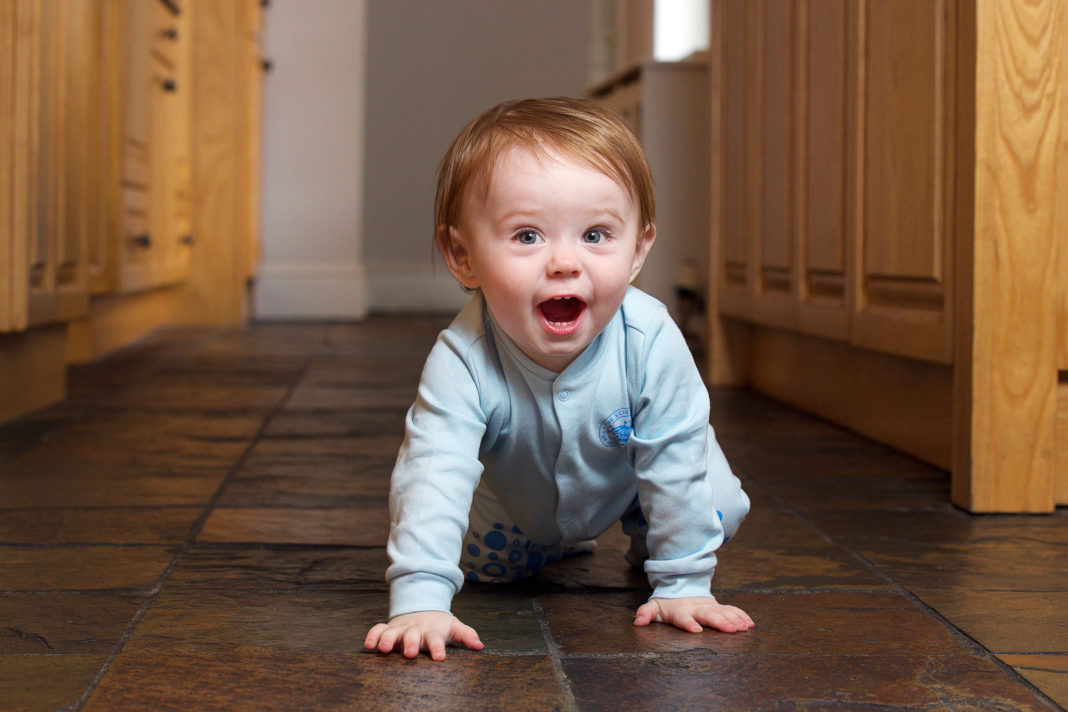Today many children are starting school with an underdeveloped pincer grip – struggling to hold a pencil or attempting to write their name.
The modern living environment is constantly changing, but the developmental needs of our little ones are not. Modern living and some changes in the environment can affect how your baby develops.
So says Ollwyn Moran, who is a Neurological Developmental Therapist, teacher, lecturer and mother of two from Dublin. Ollwyn is also the founder of multi award winning baby company COGNIKIDS™, a company that focuses on creating products that support the natural developmental stages of infants.
Technology is having an impact the developmental progress of our little ones, for example some of the things that we should consider is the decrease in popularity of carpets and the rapid spread of touch screen products.
The pincer grip occurs once baby begins to develop their fine motor skills, it is the act of using the index finger and thumb to form a strong hold/grip.
Babies begin to develop this pincer grip around 9 months old, it is a huge milestone, as it is the first sign of independence, of trying to do things for themselves. Once they have started to develop this grip, baby will be in a better position to be able to feed themselves. It is a huge developmental step as this is the first time your baby can really interact with the things around them and find out about everything.
NATURAL DEVELOPMENT NEGLECTED
It is essential later in life that baby has well developed motor skills. Today many children are starting school with an underdeveloped pincer grip – struggling to complete tasks such as building blocks and even holding a pencil or attempting to write their name. Studies believe that this is due to the increasing popularity of touch screen products. Touch screen devices are becoming more and more popular among very young children and this has a great effect on their fine motor skills as the only movements they are making is tapping and swiping. The development of finger and hand muscles is neglected.
WHAT YOU CAN DO
- Introducing finger foods like peas, raisins, or Cheerios makes feeding time fun and encourages the pincer grip development as baby tries to lift each piece individually.
- Active building play with blocks will help, and music making such as banging the wooden spoon off a saucepan will develop good grip.
- Encourage infants to point at images in a book- copying your exaggerated movements
- Have children use their fingers to make holes in dough or play dough
- Get your little one to paint on a vertical surface – a page on a wall perhaps – this puts the paint brush in the proper position (between index finger and thumb) and encourages the child use the pincer grip.
Important: Try to avoid giving your toddler a huge “jumbo” pencil, aimed at young children to help them learn to write, because they are actually more difficult to hold and to get their little fingers around. As well as being heavier – they can put your baby off learning to grip!
For young babies, COGNIKIDS™ new GRIP™ is a soft flexible baby bottle gripper that cleverly supports development, particularly fine motor skills like the pincer grip, finger movements, hand eye co-ordination, hand mouth co-ordination, and the muscles in hands.
The colourful lightweight GRIP™ device allows small hands to easily grip and hold the bottle, encouraging independent feeding, and easing the transition from breast to bottle.
CRAWLING – AN ESSENTIAL MILESTONE
For a baby, crawling is so much more than just a way of getting from A to B, it is the most vital stage in their development. Crawling is an essential developmental phase for babies as movement is the key to learning and it helps to promote healthy body and brain connections.
Babies generally begin to crawl after 6 months but we have found through our own research that today babies are actually beginning to crawl later, nearer to 8-10months due to factors in their environment. Carpets have been replaced by wooden and tiled floors, which are healthier for the respiratory system, but provide no traction for a baby trying to get a grip on the floor to move forward. This can be off putting for a young baby trying to gain the confidence to get moving.
WHAT YOU CAN DO
- Traction on modern wooden and tile floors is practically impossible; consider placing your child on a large rug, a carpeted area or outdoors on the grass to encourage their mobility.
- Ensure baby lots of tummy time, from birth. By playing on their bellies, babies develop the muscle strength in their shoulders, arms, back and trunk that helps them learn to crawl.
- Encourage your baby to reach for and move towards the toys and objects they are interested in. Lay interesting toys just a short distance away to encourage movement towards them.
- Make sure your baby has space to explore that is safe and supervised.
- Place the palms of your hands behind your child’s feet when they are on all fours. This has a stabilising effect and helps with “push off” when learning to crawl.
- Avoid too much time in baby walkers, bouncers, seats and carriers, which do little for muscle development – let baby’s own natural development instincts flourish on the floor.
The COGNIKIDS™ Easy Grip Crawl Suit is designed with gripping pads on the knees and legs to provide traction for babies struggling to crawl on slippery modern floors.









